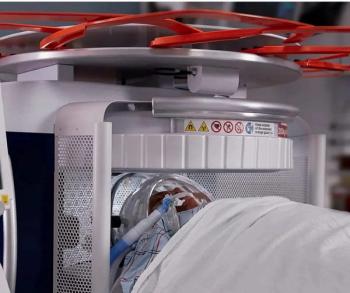
Esophageal Carcinoma Diagnosis Possible with Diffusion-Tensor MRI
Diffusion-tensor MRI and tractography may offer radiologists a noninvasive option for diagnosing esophageal carcinoma.
Diffusion-tensor MR imaging and tractography may make it possible to noninvasively diagnose the depth of mural invasion by esophageal carcinomas, according to the results of a study published recently in
“The preoperative staging of esophageal carcinoma is critically important for selecting the most appropriate treatment,” study author Ichiro Yamada, MD, of the department of diagnostic radiology and oncology at Tokyo Medical and Dental University told Diagnostic Imaging.
However, according to background information in the study, current imaging modalities including computed tomography, ultrasonography and conventional MRI are not able to provide a precise evaluation of the depth of tumor invasion of the esophageal wall.
Yamada and colleagues were recently able to demonstrate that diffusion-tensor MRI and tractography are useful for viewing individual layers of the esophageal wall. Therefore, in this study, they sought to prospectively evaluate if the modality could provide depth of mural invasion for esophageal carcinomas.
Yamada and colleagues studied 20 esophageal carcinoma specimens using a 7.0-T MRI system equipped with a four-channel phased array surface coil. Study imaging parameters were a repetition time/echo time of 3000/25, field of view of 50mm–60 mm × 25 mm–30 mm; matrix of 256 × 128; section thickness of 1 mm without intersection gaps; and b value of 1,000 sec/mm2 and motion-probing gradient in seven noncollinear directions.
Two independent observers reviewed the MR images. In 10 percent of cases, the observers did not agree and consensus was achieved through discussion. Carcinoma penetration was listed by the layer invaded. These images were then compared with histopathologic findings and differences were analyzed.
In all of the cases studied, depth of the tumor invasion was visible using the diffusion-weight images, apparent diffusion coefficient (ADC) maps, fractional anisotropy maps, λ1 maps and direction-encoded color fractional anisotropy maps.
In the λ1 maps, the carcinoma had a lower λ1 value than all other esophageal wall layers. The researchers found the λ1 maps to be the most useful for determining tumor depth because they provided the best contrast between the carcinoma and the other layers.
Additionally, ADC values were significantly lower in the carcinoma compared with the loose layers of the esophageal wall (P=0.000). The fractional anisotropy values were significantly lower than the solid layers of the esophageal wall (P=0.000).
Diffusion-tensor tractography images were also useful in determining the depth of the invasion of the carcinoma. All four layers appeared to be intact when the carcinoma was confined to the mucosa. However, when it had invaded the submucosa, the muscularis mucosae layer was observed to have been disrupted by the tumor. Similarly, when the carcinoma had invaded the muscularis propria, the muscularis propria layer was partially disrupted, and when it had fully invaded the adventitia, this layer was completely disrupted.
“Our ï¬ndings demonstrated that diffusion-tensor MR imaging makes it possible to determine the extent of esophageal carcinomas by identifying areas that have both low ADC values and low FA values and/or areas that have low λ1 values in the esophageal wall,” the researchers wrote. “Diffusion-tensor MR imaging and tractography in these ex vivo specimens provided excellent diagnostic accuracy for evaluating mural invasion by esophageal carcinomas.”
Newsletter
Stay at the forefront of radiology with the Diagnostic Imaging newsletter, delivering the latest news, clinical insights, and imaging advancements for today’s radiologists.




























